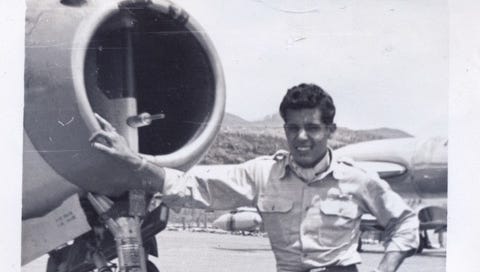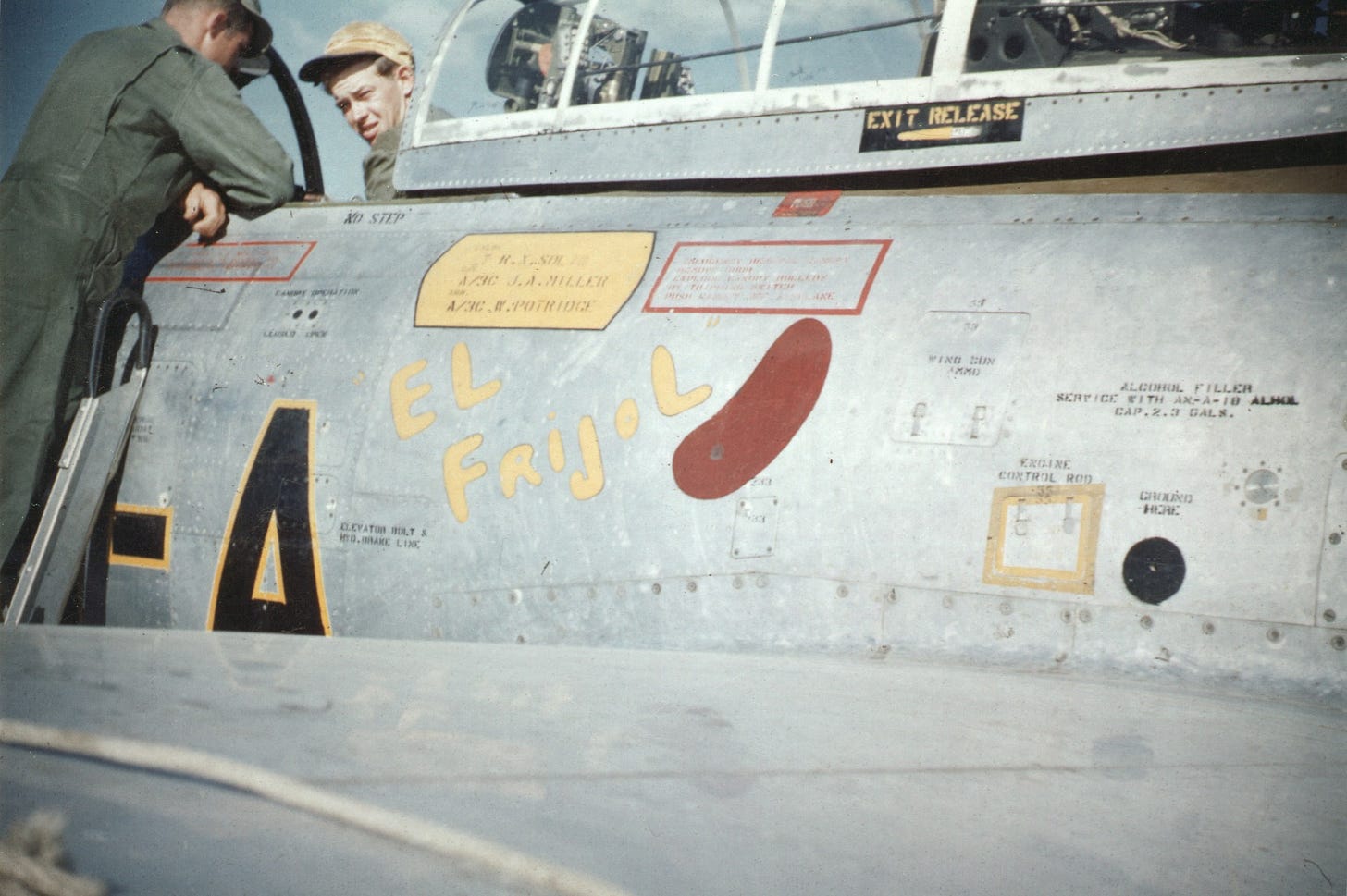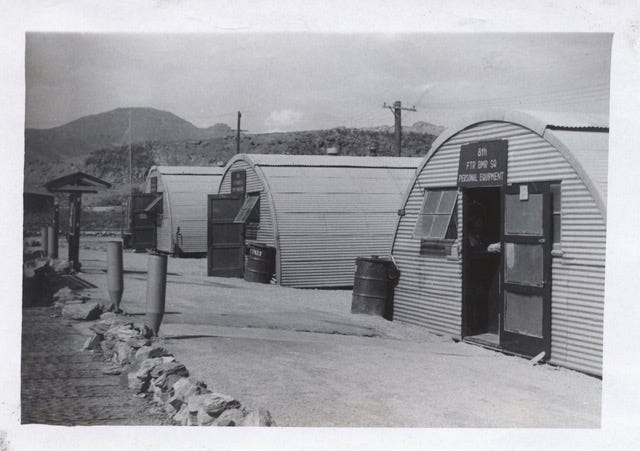Continuing from last week:
Every flight briefed before missions. Sometimes they’d fly one, other days flip-and-fly multiples, while other days none. Just arrive at the magic “100” alive and go home. Upon arrival, flight gear was issued, including maps with delineated lines. Flights flew to targets based on a grid system. There were two distinct lines on the map. One was the 38th Parallel, the dividing line for North and South. The other was the Yalu River, known as “the fence.” Pilots did not cross it since the Yalu separated North Korea from China. Early in the war, it was a career-ending no-no. If a flight was chasing the enemy and he crossed, the pursuit ended, allowing him to fight again. When fighter bombers attacked targets on the Yalu, MiGs coming out of China were a constant threat. In the heat of combat, pilots had to keep perspective on “the fence.” If they were too close, they had to break it off. Yet, they were too close because they were right on the damn thing.
And if one thinks enemy pilots did not catch on to the ins and outs of “the fence,” think again. Hit and run kept them alive for another hit and run. If only the rules had gone both ways. Politics didn’t fight the war, they ran them. Later, pilots could cross, but could not attack ground targets, inclusive of planes sitting on tarmacs, which some called “fair game.” Korea was the indubitable implementation of ROE (rules of engagement).
In flights, Lead did everything. From mapping and run sequence to target acquisitions. His main job though: Get the pilots back to base from each mission. During combat, flights received flak, anti-aircraft, small arms fire, including dreaded radar controlled 85s (85 mm) and sometimes MiGs. Chico maintained respect for the 85s, Russian-made anti-aircraft guns built in 1939 that brought hell to pilots trying to stay aloft: “The 85s were radar controlled. If they got you, you played hell getting out of their way. One had to be lucky because once they glommed (locked) on, you couldn’t get away from them.”
Fighters in the 1950s did not have the tracking and warning devices fighters today carry. Pilots had to be ever observant with a keen ability to obviate. In combat, they were always looking for incoming fire while setting up to divest. The ability to multi-task; requisite. Through each combat experience, if they survived, pilots learned new tactics. One was to dramatically increase the dive angle for bombing, increasing their chance of survival. Of the major bombing problems: If a pilot was in a dive and an 85 locked, he left the arena called life. Things happened quickly. Having the ability to process information with split-second accuracy meant life or death in Korea.
Flights consisted of seven pilots, but only four at a time flew—Lead, Two, Three, and Four—each pilot giving his plane a name. One of the pilots in John’s flight was Bob Cass. Knowing Chico was Mexican, he offered the nickname “The Bean.” Chico liked it and named his plane “El Frijol.” His crew chief painted the name and a kidney bean for good measure. Although, it did not stick career-wise and faded away after the squadron switched from the “E” model 84 to the “G.” Once Chico acquired the newer version, it became “KittyMaria.” His crew chief felt: “El Tigre.” The day after the nose art was applied, Chico walked out to fly a mission and asked: “What the hell is that?” The crew chief’s response: “Well, sir, this is what you are.”
Each mission flown required a number, and they always began with “49,” denoting the 49th Fighter-Bomber Group. The second two numbers were the sequence for the day’s flights: 01, 02, and so on. The first mission Chico flew was May 15, 1952. It was mission number 4902 with a time of two hours, fifteen minutes. The mission was interdiction, and the target was Ojungni with a load of two 500-pound bombs. Chico’s 100th was flown December 20, 1952. Number 4901 with a time of one hour, fifteen minutes. Again, interdiction, the target was Aedong with a load of two 1000-pound bombs. Although, the questions beg: What happened between one and one hundred?
As already mentioned, the first few missions were on the squadron commander’s wing. Those were by the book— no horseplay, no antics. Chico’s job was to impress with the ability to follow directions and get back with his plane intact. The responsibility of getting back to base was important to Lead. Having to constantly train new guys replacing the ones who did not return, tedious. The squadron commander also wanted to make certain one had the goods to get through. Chico sat on a wing until the comfort level was there: “On my second mission, we went up and were bombing Pyongyang. Now Pyongyang was not a good place to be; I’ll tell you, it was dangerous. There was more flak coming out of there than we had in total. I was still flying number Two to the squadron commander. We went down—he peeled, and I peeled. I went down, dove down, dropped my bombs. As I started pulling up, I don’t know why I looked out the left side of my airplane, but there was an F-9, a Panther coming right at me.
We were going to collide; we were both going after the same target, I guess, and we were going to collide, so I rolled. I pulled up and did a roll. The squadron commander watched, and he thought I was doing acrobatics in the area. I was just trying to stay out of that guy’s way. I went back, and he chewed my ass out and told me I wasn’t supposed to do acrobatics in the target area. I told him I wasn’t; I was trying to get away from that F-9 and that we were both going down. We were going to hit. The F-9 was painted blue, so they weren’t easy to see.” Chico claimed his “whole tour was full of little things like that,” regarding the F-9. And this was only mission two. Combat was life and death on steroids.





